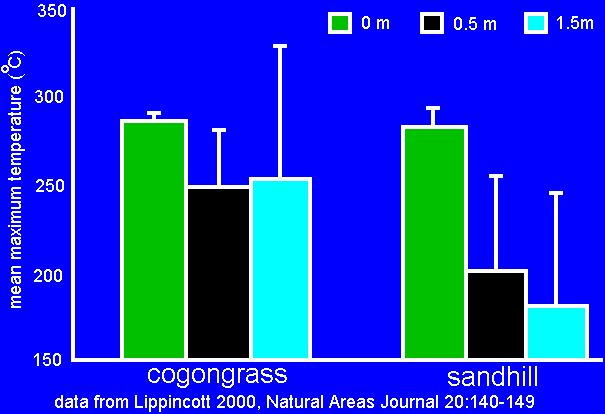 |
The Global Invasive Species Team |  |
|
|
|
Introduction First slide Slide #5 Slide #10 Slide #15 Slide #20 Slide #25 Slide #30 Slide #35 Slide #40 Slide #45 Slide #50 Slide #55 Slide #60 Slide #65 Slide #70 Last slide |

|
|||
| Research by Carol Lippincott determined that non-native cogongrass burns differently than do native species like wiregrass (Aristida beyrichiana) which it displaces in the ground layer of these communities. Fires fueled by cogongrass burn hotter, further above the ground as shown here in the data taken at 1.5 meters above the ground during burns. One of the ways long-leaf pine, which dominates the overstory in these communities, is well adapted to survive the type of fires fueled by the native vegetation, is in its seedling stage when the plants rapidly grow to over a meter high placing the vulnerable apical bud high enough to escape killing heat. But the hotter, "higher" fires fueled by cogongrass kill large numbers of these seedlings. This figure is based on data from Lippincott's published research. | ||||
| Slide 21 |
|
